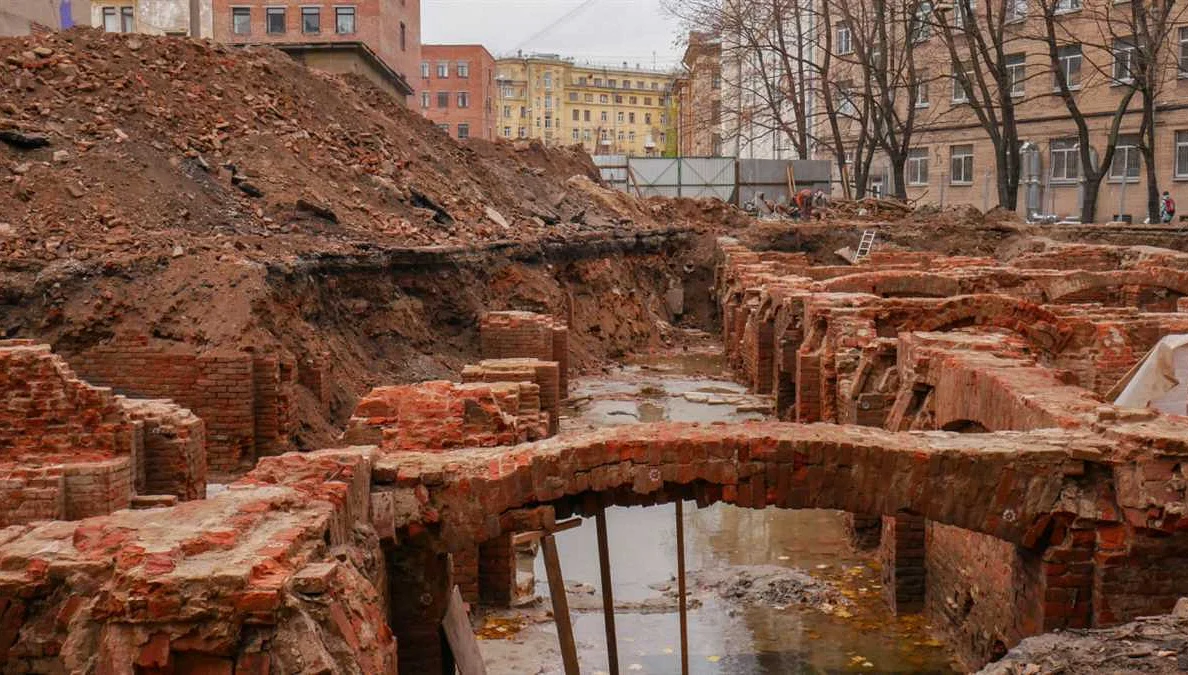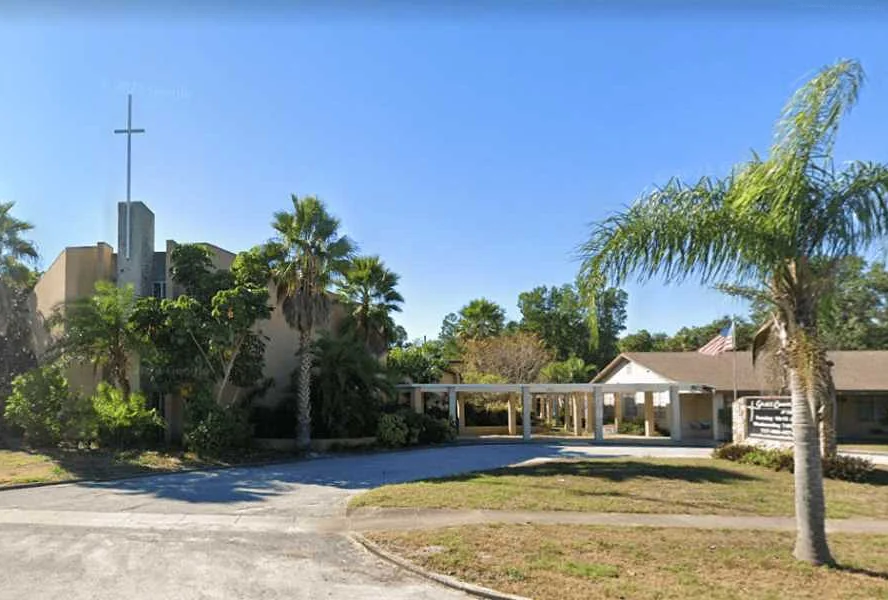“Underground hospices” are multiplying in St. Petersburg
Discover the growing trend of
In recent years, St. Petersburg has witnessed a disturbing trend – the increasing prevalence of underground hospices. These clandestine facilities have been popping up across the city, providing care for terminally ill patients who are unable to access proper medical and palliative services.
Operating in secrecy, underground hospices have become a lifeline for many individuals who are left with no other options for end-of-life care. As traditional medical institutions struggle to meet the growing demand for palliative care, these hidden facilities offer a ray of hope to those in need.
What makes underground hospices unique is their ability to provide personalized, holistic care to patients. Unlike overcrowded hospitals and clinics, these facilities focus on creating a supportive environment that prioritizes the emotional, spiritual, and physical well-being of the individual.
Patients in underground hospices receive individualized attention from a dedicated team of healthcare professionals, including doctors, nurses, and counselors. This multidisciplinary approach ensures that the patient’s unique needs are met, and their comfort and dignity are maintained.
However, the rise of underground hospices also raises concerns about the lack of regulation and oversight in these facilities. Without proper licensing and inspection, there is a risk that some may take advantage of vulnerable individuals or fail to provide adequate medical care.
In order to address this issue, it is crucial for the government and healthcare organizations to collaborate and develop a framework for regulating underground hospices. By implementing appropriate guidelines and standards, we can ensure that these facilities continue to provide compassionate and quality care to those who need it most.
Underground Hospices in St. Petersburg: A Growing Trend

While underground hospices may not be officially recognized or regulated, they serve as vital spaces for individuals who are unable or unwilling to access traditional hospice facilities. Often located in private homes or discreet locations, these hospices offer a safe and nurturing environment for patients to spend their remaining time with dignity and peace.
One of the main reasons behind the growing popularity of underground hospices is the lack of available beds in traditional hospice centers. With limited resources and an increasing elderly population, the demand for end-of-life care far outweighs the supply. As a result, individuals and their families are turning to underground hospices as an alternative option.
Another factor contributing to the rise of underground hospices is the desire for personalized and holistic care. Many individuals prefer a more intimate and individualized approach to end-of-life care, which is often difficult to achieve in larger, institutional settings. Underground hospices can provide this personalized care, tailoring their services to meet the unique needs and preferences of each patient.
Furthermore, underground hospices often operate on a donation basis, allowing individuals to access care regardless of their financial situation. This inclusive approach ensures that everyone can receive the support they need during their final days, regardless of their socioeconomic status.
While the existence of underground hospices raises concerns about the lack of oversight and accountability, they also highlight the pressing need for improved end-of-life care options. As the demand for these alternative spaces continues to grow, it is crucial for authorities and healthcare providers to address the gaps in the current system and ensure that all individuals have access to quality end-of-life care.
In conclusion, the prevalence of underground hospices in St. Petersburg is a growing trend driven by the need for alternative end-of-life care options. These hidden sanctuaries provide comfort, support, and personalized care for individuals in their final days. While they may not be officially recognized or regulated, they serve as vital spaces for those who are unable to access traditional hospice facilities. It is essential for authorities and healthcare providers to acknowledge this trend and work towards improving end-of-life care for all individuals.
Exploring the Rise of Alternative Care Facilities
In recent years, there has been a noticeable increase in the prevalence of alternative care facilities, particularly underground hospices, in St. Petersburg. These emerging healthcare options have gained attention for offering innovative approaches to care and shifting the paradigm of traditional medical institutions.
Alternative care facilities, including underground hospices, are characterized by their unique settings and patient-centered approaches. Unlike traditional hospitals, these facilities often operate in unconventional spaces, such as repurposed buildings or underground tunnels. The emphasis is placed on creating a comfortable and home-like environment that promotes healing and well-being.
One of the reasons behind the rise of alternative care facilities is the growing demand for personalized and holistic care. Many individuals are seeking alternatives to the impersonal and clinically-focused approach offered by traditional hospitals. Underground hospices, in particular, have become popular due to their ability to provide individualized care plans and emotional support for patients and their families.
Another factor contributing to the rise of these facilities is the increasing awareness and acceptance of complementary and alternative medicine (CAM). Many alternative care facilities incorporate CAM practices, such as acupuncture, massage, and herbal remedies, into their treatment plans. This integrative approach resonates with individuals who are seeking a more holistic approach to their health and well-being.
Furthermore, the rise of alternative care facilities can also be attributed to the changing demographics and healthcare needs of the population. As the population ages, there is a growing need for specialized care and support for individuals with chronic illnesses and end-of-life care. Underground hospices, with their focus on palliative care and emotional support, cater to these specific needs.
While alternative care facilities, including underground hospices, offer innovative solutions to the current healthcare landscape, they also face unique challenges. The legal and regulatory frameworks surrounding these facilities are still evolving, and there are concerns about the quality and safety of care provided in unconventional settings.
Overall, the rise of alternative care facilities, such as underground hospices, is reshaping the healthcare landscape in St. Petersburg. These facilities offer personalized, holistic care in unconventional settings, catering to the changing needs and preferences of the population. As the demand for patient-centered care continues to grow, it is likely that alternative care facilities will play an increasingly significant role in the future of healthcare.
Benefits of Underground Hospices in St. Petersburg
Underground hospices in St. Petersburg have emerged as a valuable resource for terminally ill patients and their families. These hidden sanctuaries provide a range of benefits that contribute to the overall well-being and comfort of patients during their final stages of life. Here are some of the key advantages of underground hospices in St. Petersburg:
- Privacy and tranquility: Underground hospices offer a secluded and serene environment away from the noise and distractions of the outside world. This tranquility allows patients to find peace and solace in their remaining time, creating a more relaxed and comfortable atmosphere.
- Supportive community: These hospices foster a sense of community among patients, caregivers, and staff. The shared experiences and understanding help create a support network that offers emotional and psychological comfort for all involved.
- Specialized care: Underground hospices are staffed with healthcare professionals who are specially trained in palliative care. This specialized knowledge and expertise ensure that patients receive the highest quality medical attention and pain management during their final days.
- Holistic approach: Hospices in St. Petersburg focus on treating patients holistically, addressing not only their physical needs but also their emotional, spiritual, and social well-being. This comprehensive approach aims to enhance the overall quality of life for each patient.
- Accessibility: The growing prevalence of underground hospices ensures that terminally ill patients have greater access to end-of-life care. These facilities are strategically located in residential areas, making them easily accessible for patients and their families.
- Reduced financial burden: Underground hospices often offer their services free of charge or at a significantly reduced cost. This alleviates the financial burden that families may face during a challenging time, enabling them to focus on providing emotional support to their loved ones.
Overall, the benefits of underground hospices in St. Petersburg contribute to a better quality of life for terminally ill patients and their families. These hidden sanctuaries provide a haven of comfort, support, and specialized care, ensuring that every individual’s final moments are as dignified and peaceful as possible.
Evolving Regulatory Landscape for Underground Hospices

The increasing prevalence of underground hospices in St. Petersburg has brought attention to the need for a comprehensive regulatory framework to govern these facilities. As the demand for alternative end-of-life care options grows, it is crucial that appropriate laws and regulations are in place to ensure the safety and well-being of patients.
Currently, the regulatory landscape for underground hospices is quite fragmented. There is a lack of clarity regarding the licensing and certification process for these facilities, leading to concerns about the quality of care provided. Additionally, the lack of oversight raises questions about accountability and the potential for exploitation.
Recognizing these issues, the local government has begun to take steps towards establishing a more robust regulatory framework. Through collaboration with healthcare professionals, legal experts, and advocacy groups, efforts are underway to develop guidelines and standards for underground hospices.
One key area of focus is the establishment of licensing requirements. It is essential that underground hospices meet certain criteria in terms of staffing, facilities, and quality of care. Licensing will not only serve as a way to ensure the safety of patients but also as a means of holding facilities accountable for their actions.
Another important aspect of the evolving regulatory landscape is the establishment of clear protocols for inspections and monitoring. Regular inspections will help identify any potential issues and ensure that facilities are operating in compliance with regulations. Additionally, ongoing monitoring will provide an extra layer of protection for patients, giving them the confidence that their well-being is being prioritized.
Furthermore, efforts are being made to improve transparency in the operation of underground hospices. This includes the development of guidelines for reporting and disclosure of information about the facilities. Patients and their families should have access to detailed information about the quality of care provided, enabling them to make informed decisions about their end-of-life care options.
Overall, the evolving regulatory landscape for underground hospices in St. Petersburg aims to address the current gaps in oversight and ensure that patients receive the highest quality care in these facilities. By establishing clear guidelines, licensing requirements, and monitoring protocols, the local government seeks to create a safe and transparent environment for end-of-life care.
In conclusion, the establishment of a comprehensive regulatory framework for underground hospices is crucial to meet the growing demand for alternative end-of-life care options. It will not only ensure the safety and well-being of patients but also provide peace of mind to individuals and their families during these challenging times.